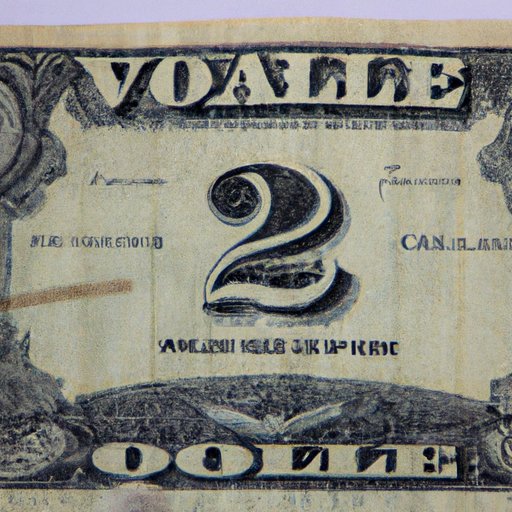
Introduction
When you come across a 2 dollar bill, chances are you might mistake it for a novelty item or a weekend souvenir. However, you might be surprised to find out that some 2 dollar bills are worth more than their face value. In this article, we’ll explore the value, collectibility, and investment potential of the 2 dollar bill, debunking common misconceptions along the way.
The Value of a 2 Dollar Bill: Why it’s More than just a Weekend Souvenir
The first thing to establish is that a 2 dollar bill is worth $2 in face value, just like any other US currency. However, its worth might go beyond that, especially based on its condition and rarity. Currency grading plays a significant role in determining the value of a 2 dollar bill. Bills that appear crisp or have no visible damage tend to be worth more than those that show wear or tear. Moreover, bills from earlier series or with unique features can also fetch a higher value.
From Rare Finds to Misprints: The Collectible 2 Dollar Bill Market
While most 2 dollar bills are not considered rare, a few factors can make them valuable among collectors. Some of the most sought-after designs come from specific series of years or bear unique imagery, such as the 1896 “Educational Series” or the 1976 Bicentennial bill, respectively. Additionally, some 2 dollar bills might contain errors or misprints, adding to their rarity and value. For instance, misprinted serial numbers or ink smudges can increase a bill’s worth significantly. Examples of high-value 2 dollar bills sold at auctions and sales include the 1891 $2 silver certificate, which sold for close to $400,000, and the 1878 $2 legal tender note, which sold for $457,000.
Uncovering the History Behind the 2 Dollar Bill’s Value
The 2 dollar bill has a unique history that adds to its value and allure. It was first introduced in 1862 during the Civil War as a legal tender to finance the war efforts. Over the years, the bill has gone through several design changes, some of which reflect important historical moments or figures, such as the “Monticello” design from 1928 featuring Thomas Jefferson’s home. While the bill has faced criticism and skepticism about its worth and purpose, it remains in circulation today, albeit not as widely distributed as other denominations. Understanding the 2 dollar bill’s history can help collectors and investors appreciate its worth and significance.
The 2 Dollar Bill Mystique: Why some are Worth More than Others
Several factors determine a 2 dollar bill’s worth beyond its face value, including its series, design, condition, and rarity. For instance, some series of the 2 dollar bill, such as the 1953 and 1963 red seal bills, are known to be valuable among collectors due to their limited numbers and unique features. Similarly, some errors or misprints can make a bill more valuable, such as the 2003A misprinted bill with an inverted front plate, which can sell for up to $2,500. It’s important to note that not all 2 dollar bills are worth more than their face value, and determining a bill’s worth requires careful research and examination.
The 2 Dollar Bill as an Investment: Is it Worth Holding Onto?
When it comes to investing in 2 dollar bills, there are pros and cons to consider. On the one hand, rare or valuable 2 dollar bills can appreciate in value over time, making them a potential profitable investment. Moreover, holding onto a 2 dollar bill as a collector’s item or as part of a diversified investment portfolio can provide a unique and tangible asset. However, investing in 2 dollar bills also poses some risks, such as dealing with counterfeit bills, fluctuations in the market, or the possibility of not finding a buyer when it’s time to sell. Some collectors might also face challenges in finding and acquiring rare or valuable 2 dollar bills. If you’re interested in investing in 2 dollar bills, it’s essential to do your research, seek expert advice, and consider all aspects of the investment before making a decision.
Conclusion
The value of a 2 dollar bill goes beyond its face value, with some bills fetching high prices on the collectible market. Factors such as rarity, historical significance, and errors or misprints can add to a bill’s worth. While investing in 2 dollar bills can be a potentially profitable endeavor, it’s important to be cautious and informed about all aspects of the investment. Whether you’re a collector or an investor, understanding the worth and significance of the 2 dollar bill can be a fascinating journey worth exploring further.




